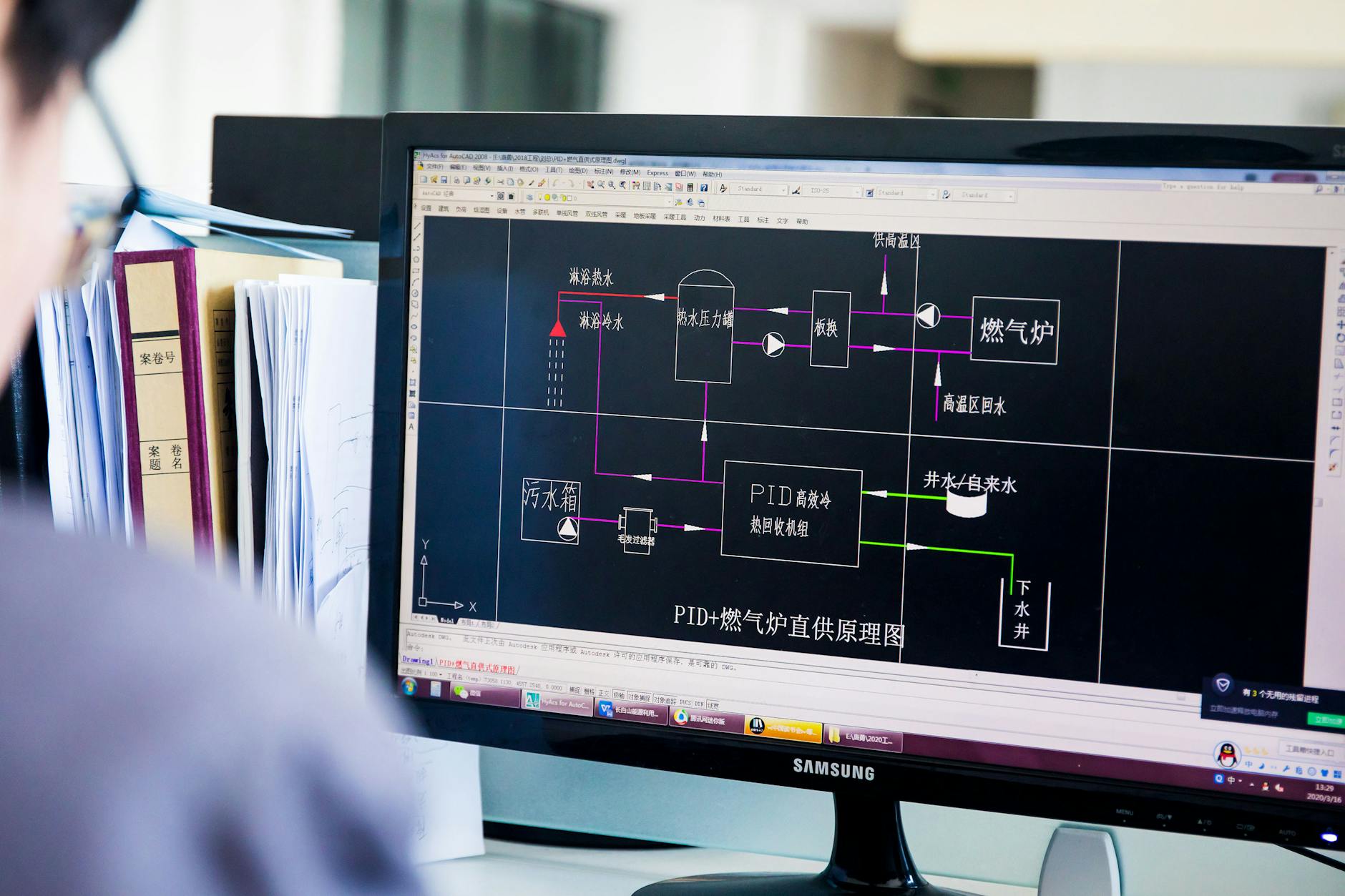Are you constantly struggling to manage your time effectively? Do you find yourself overwhelmed with tasks and deadlines? Look no further. In this blog post, we will delve into the world of time mastery and provide you with a set of proven techniques to optimize your productivity. With these strategies, you will be able to efficiently allocate your time and energy, allowing you to achieve more and reach your goals with confidence. Say goodbye to procrastination and hello to a more productive and fulfilling life. Let's dive in and unlock the secrets of time mastery.
Understanding the Importance of Time Mastery
Time is a limited and valuable resource that holds the key to unlocking productivity and achieving more in our lives. Mastering the art of managing time effectively can have a profound impact on our personal and professional success. In this section, we will explore the value of time in productivity and the consequences that poor time management can have on our lives.
The Value of Time in Productivity
Time is a critical factor when it comes to productivity. When we utilize our time efficiently, we can accomplish more tasks, meet deadlines, and make progress towards our goals. Time mastery allows us to allocate our limited resources in a way that maximizes our output and minimizes wasted effort.
By managing our time effectively, we can prioritize our tasks, focus on what truly matters, and avoid getting overwhelmed by a never-ending to-do list. When we value our time and use it wisely, we can experience a sense of accomplishment and fulfillment.
The Consequences of Poor Time Management
On the other hand, poor time management can have significant consequences on our productivity and overall well-being. When we fail to prioritize our tasks, procrastinate, or struggle with time-management skills, we may find ourselves constantly playing catch-up, feeling stressed, and falling behind on our commitments.
Inefficiency and poor time management rob us of the opportunity to make the most of our potential. It can lead to missed deadlines, decreased quality of work, and a cycle of stress and burnout. We may find ourselves always rushing, constantly multitasking, and feeling overwhelmed by the sheer volume of tasks we have to tackle.

Photo by Fredrick Eankels
It is important to recognize that time is a finite resource, and once it's gone, we can never get it back. Therefore, it is crucial to develop effective time-management skills and strategies to optimize our productivity and achieve our goals.
By understanding the value of time in productivity and acknowledging the consequences of poor time management, we can take the necessary steps to improve our time mastery skills. In the following sections, we will explore proven techniques and strategies to help you optimize your productivity and achieve more by mastering your time.
Remember, time is a precious asset that should be respected and utilized wisely. It is up to us to take control of our time and make the most of every moment.
Assessing Your Current Time Management Skills
As we strive to achieve more and optimize our productivity, it's crucial to start by assessing our current time management skills. This self-reflection allows us to identify areas where we can improve and make necessary adjustments. In this section, we will explore two key aspects of assessing your time management skills: identifying your time wasters and analyzing your priorities.
Identifying Your Time Wasters
One of the first steps in mastering your time is recognizing the activities and habits that consume your time without adding significant value. These time wasters can prevent you from accomplishing your goals and lead to inefficiency. By identifying and addressing these time wasters, you can regain control and allocate your time more effectively.
Here are some common time wasters to look out for:
- Procrastination: Delaying tasks and putting them off until the last minute can hinder your productivity.
- Excessive multitasking: Trying to do too many things at once often leads to decreased focus and lower quality work.
- Unnecessary meetings: Meetings that lack clear objectives or go off on tangents can eat up valuable time.
- Endless scrolling on social media: Mindlessly browsing social media platforms can be a major time drain.
- Poor organization: Being disorganized can result in time wasted searching for misplaced items or documents.
By recognizing these time wasters in your daily routine, you can take proactive steps to minimize or eliminate them. This will free up valuable time for more important tasks and priorities.
Analyzing Your Priorities
To effectively manage your time, it's essential to understand your priorities and allocate your time accordingly. Analyzing your priorities helps you determine where to invest your time and energy for maximum impact.
Here are some steps to help you analyze your priorities effectively:
- List your goals: Start by identifying your short-term and long-term goals. This will give you a clear framework for understanding what is most important to you.
- Assess urgency and importance: Evaluate each task or responsibility based on its urgency and importance. This will help you determine which tasks require immediate attention and which can be scheduled for later.
- Consider impact and alignment: Reflect on the impact that each task or responsibility will have on your overall goals. Prioritize tasks that align directly with your objectives and have the highest potential for positive outcomes.
- Eliminate or delegate non-essential tasks: Identify tasks that do not align with your priorities or goals and consider eliminating or delegating them to free up more time for what truly matters.
- Create a schedule: Develop a structured schedule that reflects your priorities. Allocate dedicated time slots for important tasks and guard them against potential distractions.
By analyzing your priorities, you can ensure that your time and efforts are directed towards activities that align with your goals and contribute to your overall success.
Remember, assessing your current time management skills is an essential first step in the journey towards time mastery. By identifying your time wasters and analyzing your priorities, you can lay a solid foundation for improving your productivity and achieving more in your personal and professional life.
Setting Clear Goals and Priorities
Setting clear goals and priorities is an essential step towards optimizing productivity and achieving success. By defining your long-term goals, breaking them down into actionable steps, and prioritizing tasks effectively, you can ensure maximum efficiency in your daily activities. Let's dive into each aspect in detail.
Defining Your Long-Term Goals

Photo by Andrea Piacquadio
Defining long-term goals provides you with direction and purpose. Start by asking yourself: What do I want to achieve in the next year, five years, or even ten years? Set specific, measurable, achievable, relevant, and time-bound (SMART) goals that align with your overall vision. These goals will serve as your compass, guiding your decision-making and actions.
Breaking Down Goals into Actionable Steps

Photo by Marko Klaric
Once you have established your long-term goals, it's crucial to break them down into smaller, actionable steps. This helps prevent overwhelm and provides a clear roadmap to follow. Identify the milestones or key objectives that need to be accomplished along the way. Then, break these objectives into manageable tasks that you can tackle one at a time. By taking small, consistent steps, you'll steadily progress towards your goals.
Prioritizing Tasks for Maximum Efficiency

Photo by Gustavo Fring
Not all tasks are created equal. Prioritizing tasks allows you to focus your time and energy on what matters most. One effective technique is the Eisenhower Matrix, which categorizes tasks based on their importance and urgency. This matrix helps you identify and prioritize tasks that are both important and urgent, ensuring you don't waste time on activities that have little impact on your goals.
Another approach is to consider the impact and effort required for each task. Focus on high-impact tasks that align with your goals and require a reasonable amount of effort. By tackling these tasks first, you'll make significant progress and maintain momentum throughout your day.
To further enhance productivity, consider the concept of "batching" similar tasks together. For example, reserve specific blocks of time for emails, meetings, or creative work. This minimizes context switching and maximizes concentration, resulting in increased efficiency and better outcomes.
Remember, effective goal setting and task prioritization are iterative processes. Regularly review and adjust your goals and priorities to adapt to changing circumstances and optimize your productivity.
Setting clear goals and priorities is a foundational step in mastering time and increasing productivity. By defining your long-term goals, breaking them down into actionable steps, and prioritizing tasks wisely, you can streamline your focus and achieve remarkable results. Stay tuned for the next section, where we will explore powerful techniques to manage distractions and stay focused on your goals.
Effective Planning and Organization Techniques
Creating Daily and Weekly Schedules
It's no secret that effective planning and organization are key to maximizing productivity and achieving more in your daily life. One highly effective technique is creating daily and weekly schedules. By taking the time to plan out your tasks and activities in advance, you can ensure that you make the most of your time and stay on track with your goals.
When creating a daily schedule, start by identifying your most important tasks and allocating specific time slots for them. Consider your peak productivity times and schedule your most challenging or mentally demanding tasks during those periods. This way, you can leverage your natural energy levels and focus on tasks when you are at your best.
Additionally, be sure to allocate time for breaks and leisure activities. Taking short breaks throughout the day can help you recharge and maintain your focus. Remember to be realistic when setting your schedule and allow some flexibility for unexpected events or delays.
Utilizing Time Management Tools and Apps
In today's digital age, there is a wide range of time management tools and apps available to help you optimize your productivity. These tools can assist you in organizing your tasks, tracking your progress, and managing your time efficiently. Here are a few popular options:
- Trello: Trello is a versatile project management tool that allows you to create boards, lists, and cards to organize your tasks and collaborate with others. It's ideal for visual thinkers and offers a user-friendly interface.
- Todoist: Todoist is a simple yet powerful task management app that allows you to create and prioritize tasks, set due dates, and receive reminders. It syncs seamlessly across devices, ensuring you have your to-do list at your fingertips.
- Google Calendar: Google Calendar is a widely used calendar app that enables you to schedule appointments, set reminders, and share your calendar with others. It integrates smoothly with other Google tools, making it convenient for those already utilizing Google services.
- RescueTime: RescueTime is a productivity app that tracks your computer and mobile device usage, providing you with insights into how you spend your time. It helps you identify time-wasting activities and allows you to set goals for optimizing your productivity.
Remember to explore different tools and apps to find the ones that align with your specific needs and preferences. Take advantage of the features they offer to streamline your workflow and make the most of your time.
Utilizing effective planning and organization techniques, such as creating daily and weekly schedules and utilizing time management tools and apps, can significantly improve your productivity and help you achieve more in both your personal and professional life. By taking control of your time and staying organized, you'll be able to tackle tasks efficiently and make progress towards your goals.

Photo by cang hai
Overcoming Procrastination and Distractions
Procrastination and distractions can significantly hinder our productivity and prevent us from achieving our goals efficiently. In this section, we will explore effective techniques to overcome procrastination habits and manage digital distractions.
Identifying and Addressing Procrastination Habits
Procrastination is the act of delaying or postponing tasks, often resulting in a last-minute rush or incomplete work. To overcome procrastination, it is crucial to identify the underlying reasons for this behavior and take proactive measures to address them.
- Self-awareness: Start by recognizing and acknowledging your procrastination tendencies. Understand the reasons behind your delay in completing tasks. Is it due to fear, lack of motivation, or difficulty prioritizing?
- Break tasks into smaller steps: Large and overwhelming tasks can contribute to procrastination. Break them down into smaller, more manageable steps. This approach allows you to focus on one step at a time, reducing the feeling of being overwhelmed.
- Set realistic goals and deadlines: Establish clear and achievable goals for your tasks. Setting deadlines can help create a sense of urgency and prevent unnecessary procrastination.
- Eliminate distractions: Minimize external distractions that may tempt you to procrastinate. Find a quiet and dedicated workspace, turn off notifications on your phone, and avoid opening unrelated websites or apps while working.
- Practice the Pomodoro Technique: The Pomodoro Technique involves working for a set period, typically 25 minutes, followed by a short break. This structured approach can enhance focus and productivity while reducing the temptation to procrastinate.
Managing Digital Distractions
Digital distractions, such as social media notifications, emails, and endless online content, can easily consume our attention and derail productivity. Implementing strategies to manage these distractions is crucial for optimizing our time and achieving more.
- Create designated work time: Allocate specific time blocks for focused work and communicate this to those around you. Make it clear that you should not be disturbed unless it is an emergency.
- Utilize website blocking tools: Install browser extensions or apps that allow you to block access to distracting websites during designated work periods. This helps eliminate the temptation to engage in non-essential online activities.
- Set boundaries with notifications: Silence or disable non-essential notifications on your devices. Prioritize important notifications and turn off or mute those that can wait.
- Practice mindful internet usage: Be conscious of your online activities and their impact on your productivity. Ask yourself if browsing social media or engaging in non-work-related content is truly beneficial or simply a distraction.
- Take regular breaks: Schedule short breaks throughout your work sessions. Use this time to relax, stretch, or engage in activities that allow your mind to recharge. Stepping away from the screen can reduce the likelihood of succumbing to digital distractions.

Photo by Pavel Danilyuk
Strategies for Improving Focus and Concentration
In today's fast-paced world, improving focus and concentration is crucial for maximizing productivity and achieving more in less time. By implementing effective strategies, such as time blocking techniques and incorporating regular breaks, you can optimize your ability to concentrate and accomplish tasks efficiently. In this section, we will explore these two approaches in detail.
Implementing Time Blocking Techniques
Time blocking is a powerful method to manage your schedule and allocate specific time slots for different activities throughout the day. By dedicating uninterrupted blocks of time for focused work, you can minimize distractions and increase your productivity. Here's how you can effectively implement time blocking:
- Plan your day: Start by outlining your tasks and priorities for the day. Identify the most critical activities that require your undivided attention.
- Assign time blocks: Allocate specific time periods for each task or category of activities. Divide your day into manageable chunks, such as 30-minute or 60-minute intervals, depending on the complexity and duration of your tasks.
- Eliminate distractions: During your designated time blocks, eliminate potential distractions as much as possible. Put your phone on silent mode, close unnecessary tabs on your computer, and create a quiet and clutter-free work environment.
- Set boundaries: Communicate your time blocks to colleagues or family members, making it clear that you should not be interrupted unless it's an emergency. Establishing boundaries ensures uninterrupted focus during designated work periods.
- Stick to the schedule: Consistency is key. Aim to follow your time blocks rigorously, avoiding any temptation to deviate from your planned activities. Treat your time blocks as sacred appointments with yourself.
By implementing time blocking techniques, you can enhance your focus and control over your schedule, leading to improved productivity and goal achievement.
Incorporating Regular Breaks for Optimal Productivity
While it may seem counterintuitive, incorporating regular breaks into your work routine can significantly boost your overall productivity. Short breaks throughout the day allow your mind to recharge, increase cognitive function, and prevent burnout. Here are some effective ways to incorporate regular breaks for optimal productivity:
- Pomodoro Technique: The Pomodoro Technique involves working in focused intervals of typically 25 minutes, followed by a short 5-minute break. After completing four Pomodoros, take a more extended break of around 15-30 minutes. This cycle helps maintain concentration while providing regular intervals of rest.
- Physical movement breaks: Engage in physical movements during breaks, such as stretching, walking, or light exercises. Physical activity increases blood flow to the brain, enhances focus, and promotes overall well-being.
- Mental relaxation breaks: Dedicate some break time to mental relaxation techniques, such as deep breathing, mindfulness, or meditation. These practices help reduce stress, clear the mind, and improve concentration.
- Social breaks: Interacting with colleagues, friends, or family members during breaks can be refreshing and provide a mental boost. Engaging in brief conversations or taking a coffee break with a colleague can provide a much-needed change of pace.
Remember, breaks should be purposeful and rejuvenating, rather than mindlessly scrolling through social media or getting lost in distractions. Strategic breaks can help you maintain focus and sustain high levels of productivity throughout the day.

Photo by Quang Nguyen Vinh
Delegating and Outsourcing Tasks
Delegating and outsourcing tasks is a crucial component of time mastery and optimizing productivity. By effectively identifying tasks suitable for delegation and utilizing virtual assistants or freelancers, you can free up valuable time and focus on high-priority activities that require your unique skills and expertise.
Identifying Tasks Suitable for Delegation
When it comes to delegating tasks, it's important to identify the right ones that can be effectively and efficiently handled by others. Here are some factors to consider when determining which tasks are suitable for delegation:
- Routine and repetitive tasks: Tasks that are repetitive in nature, such as data entry, appointment scheduling, or basic research, can often be delegated to others. By offloading these tasks, you can save time and redirect your energy towards more strategic activities.
- Lower-level responsibilities: Review your workload and identify tasks that fall within the lower-level responsibilities of your role. These tasks can often be delegated, allowing you to focus on higher-level decision-making and leadership responsibilities.
- Non-core activities: Consider tasks that are not directly related to your core competencies or areas of expertise. These are activities that can be handled by others, allowing you to concentrate on tasks that require your specific skill set.
- Time-consuming tasks: Take note of tasks that consume a significant amount of your time but don't necessarily require your direct involvement. By delegating these tasks, you can reclaim valuable hours in your day.
Remember, delegation doesn't mean relinquishing control entirely. It's about empowering others to take on tasks that they are capable of handling while you oversee and provide guidance as needed.
Utilizing Virtual Assistants or Freelancers
In today's interconnected world, virtual assistants and freelancers offer a cost-effective solution for delegating tasks. Here's how you can effectively utilize them:
- Clearly define tasks and expectations: When working with virtual assistants or freelancers, ensure that you clearly communicate the tasks, deadlines, and expected outcomes. Provide detailed instructions and any necessary resources to ensure they have all the information they need.
- Choose the right platform or service: There are numerous platforms and services available to connect you with virtual assistants or freelancers. Research and choose the one that best aligns with your requirements and preferences.
- Establish clear lines of communication: Maintain open lines of communication with your chosen assistants or freelancers. Regularly check in, provide feedback, and address any questions or concerns they may have. Utilize communication tools such as email, instant messaging, or project management platforms to stay connected.
- Set realistic timelines and deadlines: Clearly communicate your timelines and deadlines, ensuring they are realistic and achievable. Allow for flexibility in case of unforeseen circumstances.
By effectively utilizing virtual assistants or freelancers, you can tap into a global talent pool and leverage their skills and expertise. This not only relieves your workload but also creates opportunities for collaboration and growth.

Photo by Polina Zimmerman
Delegating and outsourcing tasks can be a game-changer in optimizing your productivity and achieving more. By identifying tasks suitable for delegation and effectively utilizing virtual assistants or freelancers, you can unlock your full potential and focus on what truly matters. Remember, mastering your time is the key to success in today's fast-paced world.
Effective Time Tracking and Analysis
In today's fast-paced world, effective time management is key to enhancing productivity and achieving more. One essential aspect of time mastery is time tracking and analysis. By diligently monitoring and evaluating the time spent on various tasks, we can gain valuable insights into our work patterns and identify areas for improvement. In this section, we will explore the importance of tracking and evaluating time spent on tasks, as well as strategies for identifying areas where we can enhance our productivity.
Tracking and Evaluating Time Spent on Tasks
Tracking time spent on tasks is a critical practice for optimizing productivity. By accurately recording the time you invest in different activities, you gain a clear understanding of how your day is structured and where your efforts are focused. This can help you identify areas of inefficiency or unproductive habits that may be hindering your progress.
One effective way to track your time is by using various digital tools specifically designed for this purpose. These tools often provide features such as timers, reminders, and task categorization, enabling you to log your time with ease and accuracy. Additionally, some tools offer advanced analytics and reporting features, allowing you to gain valuable insights into your time allocation across different projects or responsibilities.
Identifying Areas for Improvement
Once you have tracked your time, it's important to analyze the data to identify areas where you can make improvements. Here are some strategies to help you in this process:
- Analyze Task Duration: Review the duration of individual tasks to understand which activities consume the most time. This analysis can help you identify tasks that may be taking longer than necessary or activities where you could potentially delegate or automate certain aspects.
- Evaluate Distractions: Consider the interruptions and distractions that occur throughout your day. Common distractions include email notifications, social media usage, or unplanned meetings. By identifying and minimizing these distractions, you can allocate your time more effectively and stay focused on high-priority tasks.
- Prioritize Tasks: Assess the urgency and importance of your tasks. Prioritizing tasks helps you allocate your time based on their significance, ensuring you tackle critical activities first. This approach helps prevent time wastage on less important tasks.
- Identify Bottlenecks: Identify any bottlenecks or recurring obstacles that slow down your progress. It could be certain processes, dependencies on others, or lack of necessary resources. By recognizing these bottlenecks, you can find ways to overcome them and streamline your workflow.
Tracking and analyzing your time empowers you to make informed decisions about how to optimize your productivity. It allows you to identify areas where you can make adjustments, reduce time wastage, and focus your efforts on high-value tasks. By honing your time management skills through effective time tracking and analysis, you can master your schedule and achieve more in all areas of your life.

Photo by ready made
Conclusion
In conclusion, time mastery is a crucial skill that can greatly enhance your productivity and help you achieve more. By implementing proven techniques such as prioritizing tasks, setting clear goals, managing distractions, and effectively planning your schedule, you can optimize your time and make the most out of each day. Remember to leverage technology and tools that aid in time management, and always be proactive in evaluating and adjusting your approach to ensure continuous improvement. With consistent practice and dedication, you can become a master of your time and accomplish your goals with ease. So start implementing these techniques today and unlock your full potential!








